
FACULTY OF COMMUNICATION
Department of Cinema and Digital Media
GEET 310 | Course Introduction and Application Information
| Course Name |
Gender and Media
|
|
Code
|
Semester
|
Theory
(hour/week) |
Application/Lab
(hour/week) |
Local Credits
|
ECTS
|
|
GEET 310
|
Fall/Spring
|
3
|
0
|
3
|
4
|
| Prerequisites |
None
|
|||||
| Course Language | ||||||
| Course Type |
Second Foreign Language
|
|||||
| Course Level |
-
|
|||||
| Mode of Delivery | - | |||||
| Teaching Methods and Techniques of the Course | - | |||||
| Course Coordinator | ||||||
| Course Lecturer(s) | ||||||
| Assistant(s) | - | |||||
| Course Objectives | This course conceptualizes gender as a category of knowledge and aims to understand how gender is constructed by the media. We will consider gender as a constitutive element of identity and by analyzing its intersection with other categories such as race, class, nation and sexuality, we will grasp the importance of the representation of gender in media and its meaning for our lives. The course consists of lectures, screenings and discussions revolving around critical analysis of and engagement with contemporary examples of film, television, adverts and new media. |
| Learning Outcomes |
The students who succeeded in this course;
|
| Course Description | his course examines various images and representations of gender in media paying particular attention to contemporary discussions. Employing theories from cultural studies, media, film, reception and gender studies, it explores different processes and practices of gender, specifically in terms of media representations of femininity, masculinity and queerness. The media plays a major role in "constructing" gender, and “popular” views of what appropriate gendering is, in turn, shape how we communicate with each other. Participation (20%) – You should come to class prepared to ask questions and ready to make lively, insightful, substantive and respectful contributions to our discussion of the course materials. Written Assignment (20%): These assignments require the students to select a theme we have covered in the class and conduct a detailed analysis of how that example reflects the context in which it was produced/distributed/exhibited. |
|
|
Core Courses | |
| Major Area Courses | ||
| Supportive Courses | ||
| Media and Management Skills Courses | ||
| Transferable Skill Courses |
WEEKLY SUBJECTS AND RELATED PREPARATION STUDIES
| Week | Subjects | Related Preparation |
| 1 | Course Introduction: Why should and how do we study gender in the media | |
| 2 | Gender and Identity | Gauntlett, D. Media, Gender and Identity, London and New York: Routledge, 2002: 1-41. |
| 3 | Gender and Media Representation | Gallagher, M. “Media and the Representation of Gender”. The Routledge Companion to Media and Gender.2014: 23-31. Eds. C. Carter, L. Steiner and L. McLaughin. London and New York: Routledge, 2014. S. Hall, “The Work of Representation.” İçinde Representation: Cultural Representations and Signifying Practices. Ed. S. Hall. London, California, New Delhi: Sage Publications, 2003. |
| 4 | Femininity and spectacle | Butler, J. Performative Acts and Gender Constitution: An Essay in Phenomenology and Feminist Theory, Theatre Journal , Vol. 40, No. 4 (December, 1988): 519-531. Stewart, M. L. “The politics and spectacle of fashion and femininity.” Journal of Women's History. 17(1), (2005): 192-200. |
| 5 | Representations of masculinity | Ta. L. M. “Hurt so good: Fight Club, masculine violence, and the crisis of capitalism.” The Journal of American Culture, 29(3), (2006): 265-277. Cohan S. and Hark, I. R. (Eds.) Screening the Male: Exploring Masculinities in Hollywood Cinema. London and New York: Routledge, 2002: 1-22. |
| 6 | Queer theory and queer in media | Gerhard. J. “Sex and the City: Carrie Bradshaw's queer postfeminism. Feminist Media Studies”. 5(1), (2005): 37-49. Avila-Saavedra, Guillermo. Nothing queer about queer television: televized construction of gay massculinities, Media Culture Society 2009, Vol. 31(1): 5–21. |
| 7 | Gender, race and media | Entman R. M. and Rojecki, A. The black image in the white mind: Media and race in America. Chicago, IL: University of Chicago Press, 2000: 205-226. |
| 8 | Gender, class and media | Tasker,Y. Working girls: Gender and sexuality in popular cinema. London & New York: Routledge, 2002: 1-18. |
| 9 | Gender and violence | Dowds, E. An international legal response to #MeToo, 4, 2018. https://theconversation.com/an-international-legal-response-to-metoo-rape-and-sexual-abuse-is-needed-95617. |
| 10 | Gender and representation of violence in media | Gender Violence and The Case of Fatal Attraction (Adrian Lyne, 1987) |
| 11 | Gender and media in Turkey | E. Cox, “#MeToo is not enough: it has yet to shift the power imbalances that would bring about gender equality”, Mart 18, 2018. https://theconversation.com/metoo-is-not-enough-it-has-yet-to-shift-the-power-imbalances-that-would-bring-about-gender-equality-92108 |
| 12 | Student presentations | |
| 13 | Student presentatios | |
| 14 | Evaluation of the term, discussion and preperation for the final exam | |
| 15 | Review of the term | |
| 16 | Review of the term |
| Course Notes/Textbooks | D. Gauntlett, Media, Gender and Identity, London and New York: Routledge, 2002. |
| Suggested Readings/Materials | The course uses the sources that are listed above |
EVALUATION SYSTEM
| Semester Activities | Number | Weigthing |
| Participation |
1
|
10
|
| Laboratory / Application | ||
| Field Work | ||
| Quizzes / Studio Critiques | ||
| Portfolio | ||
| Homework / Assignments | ||
| Presentation / Jury |
2
|
50
|
| Project | ||
| Seminar / Workshop | ||
| Oral Exams | ||
| Midterm | ||
| Final Exam |
1
|
40
|
| Total |
| Weighting of Semester Activities on the Final Grade |
3
|
60
|
| Weighting of End-of-Semester Activities on the Final Grade |
1
|
40
|
| Total |
ECTS / WORKLOAD TABLE
| Semester Activities | Number | Duration (Hours) | Workload |
|---|---|---|---|
| Theoretical Course Hours (Including exam week: 16 x total hours) |
16
|
3
|
48
|
| Laboratory / Application Hours (Including exam week: '.16.' x total hours) |
16
|
0
|
|
| Study Hours Out of Class |
14
|
2
|
28
|
| Field Work |
0
|
||
| Quizzes / Studio Critiques |
0
|
||
| Portfolio |
0
|
||
| Homework / Assignments |
0
|
||
| Presentation / Jury |
2
|
10
|
20
|
| Project |
0
|
||
| Seminar / Workshop |
0
|
||
| Oral Exam |
0
|
||
| Midterms |
0
|
||
| Final Exam |
1
|
24
|
24
|
| Total |
120
|
COURSE LEARNING OUTCOMES AND PROGRAM QUALIFICATIONS RELATIONSHIP
|
#
|
Program Competencies/Outcomes |
* Contribution Level
|
||||
|
1
|
2
|
3
|
4
|
5
|
||
| 1 | To be able to have fundamental knowledge about narrative forms in cinema, digital and interactive media, and the foundational concepts relevant to these forms. |
|||||
| 2 | To be able to create narratives based on creative and critical thinking skills, by using the forms and tools of expression specific to cinema and digital media arts. |
|||||
| 3 | To be able to use the technical equipment and software required for becoming a specialist/expert in cinema and digital media. |
|||||
| 4 | To be able to perform skills such as scriptwriting, production planning, use of the camera, sound recording, lighting and editing, at the basic level necessary for pre-production, production and post-production phases of an audio-visual work; and to perform at least one of them at an advanced level. |
|||||
| 5 | To be able to discuss how meaning is made in cinema and digital media; how economy, politics and culture affect regimes of representation; and how processes of production, consumption, distribution and meaning-making shape narratives. |
|||||
| 6 | To be able to perform the special technical and aesthetic skills at the basic level necessary to create digital media narratives in the fields of interactive film, video installation, experimental cinema and virtual reality. |
|||||
| 7 | To be able to critically analyze a film or digital media artwork from technical, intellectual and artistic perspectives. |
|||||
| 8 | To be able to participate in the production of a film or digital media artwork as a member or leader of a team, following the principles of work safety and norms of ethical behavior. |
|||||
| 9 | To be able to stay informed about global scientific, social, economic, cultural, political, institutional and industrial developments. |
|||||
| 10 | To be able to develop solutions to legal, scientific and professional problems surrounding the field of cinema and digital media. |
|||||
| 11 | To be able to use a foreign language to communicate with colleagues and collect data in the field of cinema and digital media. ("European Language Portfolio Global Scale", Level B1). |
|||||
| 12 | To be able to use a second foreign language at the medium level. |
|||||
| 13 | To be able to connect the knowledge accumulated throughout human history to the field of expertise. |
|||||
*1 Lowest, 2 Low, 3 Average, 4 High, 5 Highest
NEWS |ALL NEWS
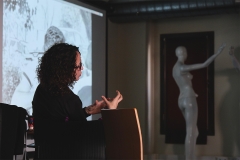
"Working with Found Footage" Workshop Organized with Zeyno Pekünlü
Artist, director, activist and academician Zeyno Pekünlü was the guest of CDM232: Digital Film Studio II.
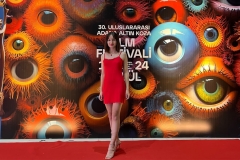
CDM senior year student Ecem has been selected to the Animation category at Adana Altın Koza Film Festival
CDM 4th-grade student Ecem Çörtle has been selected as a finalist in the National Student Films category of the 30th International Adana
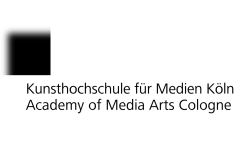
CDM graduate Eylül Berivan Kızılırmak has been accepted to the Cologne Academy of Media Arts
CDM graduate Eylül Berivan Kızılırmak has been accepted to the master's program at the Academy of Media Arts Cologne (Kunsthochschule für Medien Köln).
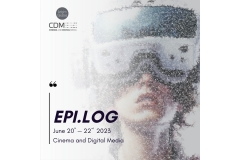
Traditionalistic CDM End of Year Exhibition EPI.LOG took place in FC Studios
Cinema and Digital Media End of Year Exhibition EPI.LOG 2023, organized as part of IUE Faculty of Communication Exhibition "FC-EX 2023", was
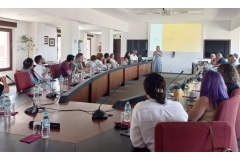
IUE Faculty of Communication Advisory Board members visited our Faculty and Studios on June 22, 2023
IUE Faculty of Communication Advisory Board members Andreas Treske, Ayşe Matay, Barbaros Görgü, Dilek Gappi, Elif Demirci İşleğen, Emine Uysal Berger, Murat
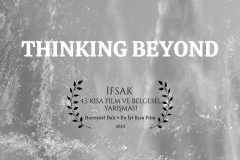
Ataberk awarded at the İFSAK 43rd National Short Film and Documentary Competition
Our third-year student, Ataberk Eyolcu, returned from the 43rd National Short Film and Documentary Competition of İFSAK (Istanbul Photography and Cinema Amateurs
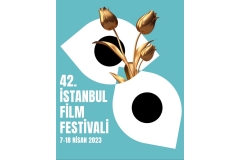
Our third-year CDM student Fikret Başar Kaya was at the 42nd Istanbul Film Festival
Our third year CDM student Fikret Başar Kaya participated as a Young Jury at the 42nd Istanbul Film Festival held on April
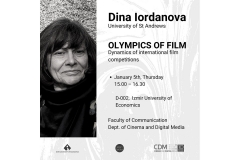
CDM hosted Dina Iordanova
Prof. Dina Iordanova gave a speech titled Olympics of Film: Dynamics of international film competitions on Thursday, January 5, 2023, in D002 at Izmir

